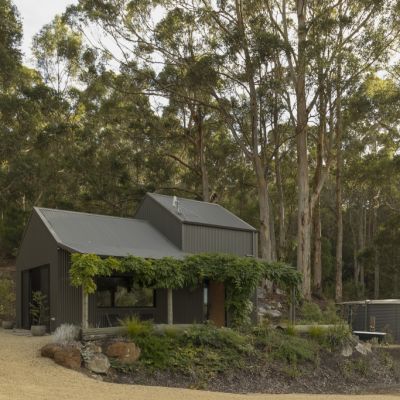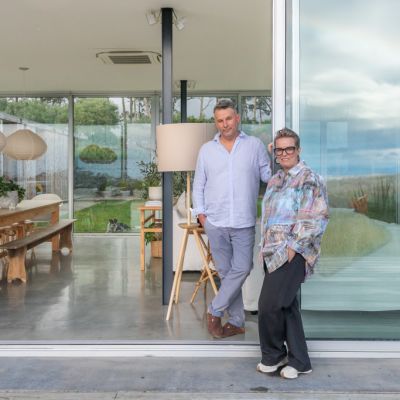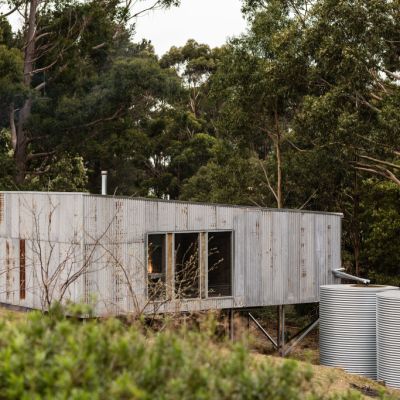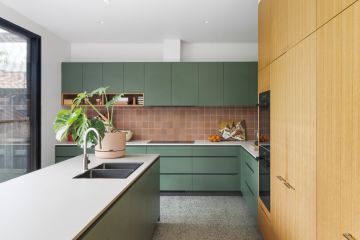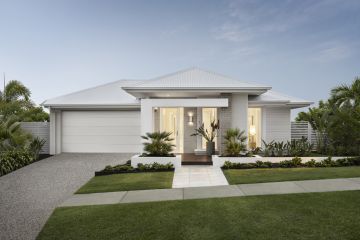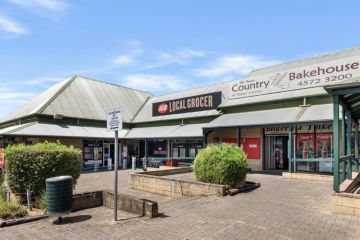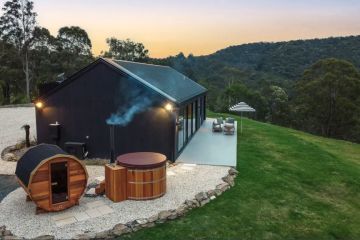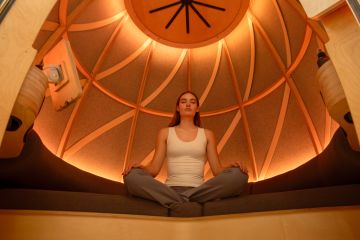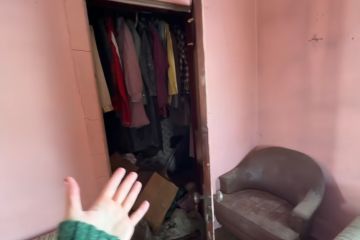Jamie Durie puts six-bedroom, six-bathroom home on market for $33 million
- Owner: Landscape designer and TV host Jamie Durie and his singer-songwriter wife, Ameka Jane
- The property: Eco-friendly nine-storey waterside home
- Address: 189 Riverview Road, Avalon Beach, NSW
- Price guide: $33 million
- Expressions of interest: Close 5.00pm, November 11
- Agent: McGrath Pittwater-Avalon, James Baker 0421 272 692
The “hanging gardens of Avalon” is what affable landscape designer and TV host Jamie Durie calls his luminous living room overlooking Pittwater on Sydney’s northern beaches.
With around 330 plants, including philodendrons and ivy, reaching upwards, downwards and sideways in the soaring double-height void, it could well be one of the wonders of contemporary Sydney architecture.
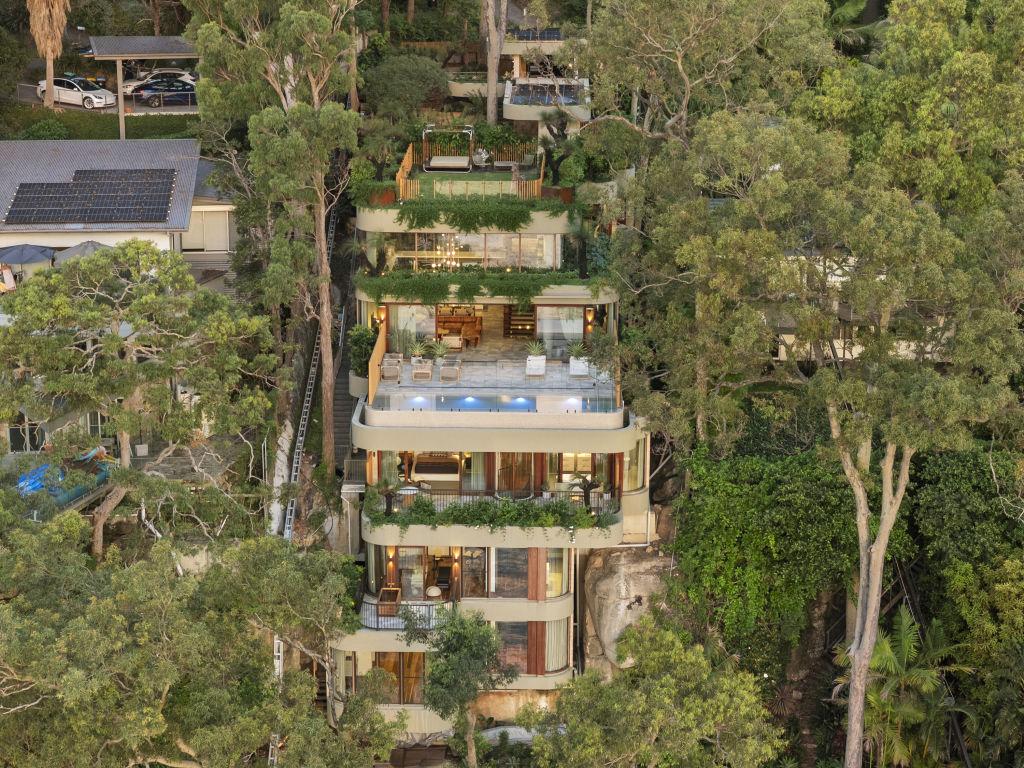
When Durie bought the Avalon Beach property in 2015, it was occupied by a scruffy mid-century weekender, enveloped in bush on a site tumbling down to its own much-prized beach and jetty.
His original vision for the property was a series of prefabricated cubes crouched among the eucalypts and clinging to the 37-degree slope, with an anticipated build time of three months.
But, with 20-plus spotted gums to retain and negotiate, that plan wouldn’t cut it. In something of an understatement, the project grew like mad and now extends over nine levels from the road down to the water’s edge, with many pockets of low-maintenance garden along the way.
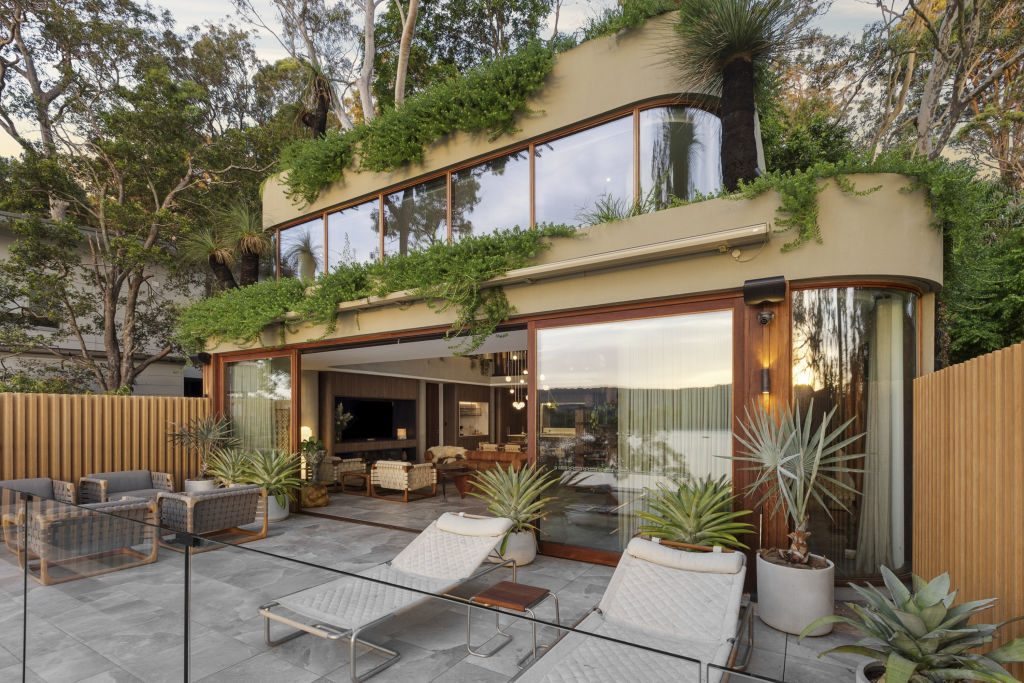
Durie met his wife, singer-songwriter Ameka Jane, in 2020, and they have since had two children, daughter Beau, 4, and son Nash, 2. Durie’s aspirations grew with his family, and something more lavish formed in his mind.
To help him navigate those spotted gums as well as tricky DAs, he recruited architecture studio Silvester Fuller.
Paradoxically, and perhaps the biggest wonder of all, something so large and luxe remains kind to the planet.
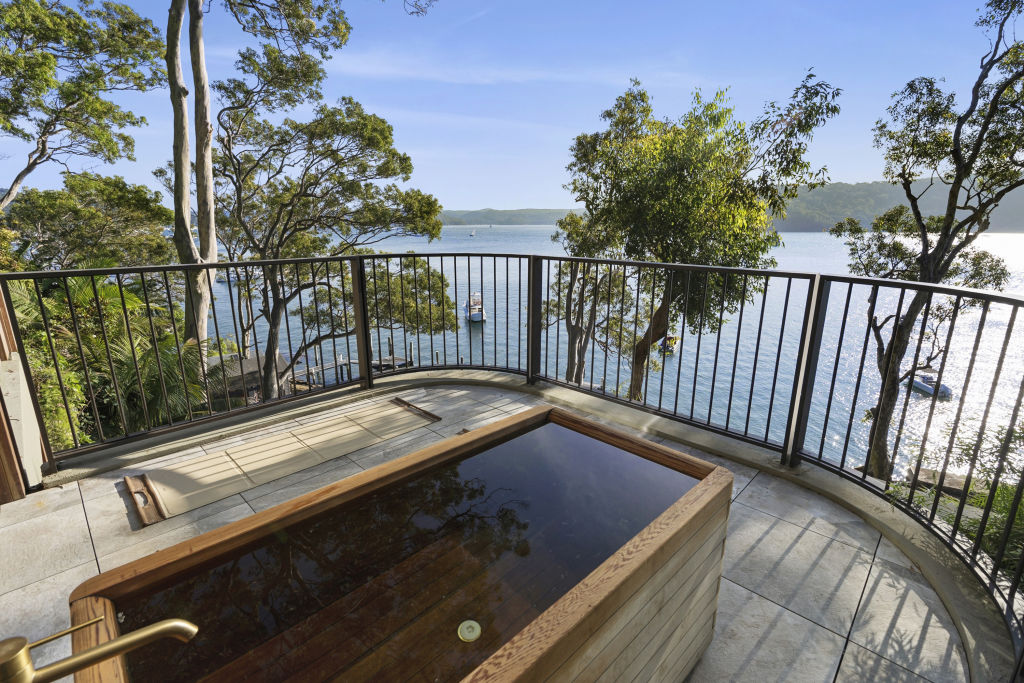
The terraced levels accommodate six bedrooms and six bathrooms, with a child-friendly rooftop garden on the top floor, an entry level with study and mezzanine, living areas below those on the ground floor, sleeping areas on the lower ground, a “wellbeing level” with Pilates studio, sauna and steam room, a separate guest house below the main house, and, finally, a boathouse with the water lapping around it.
“It’s like a waterfall,” Durie says, “but with gardens tumbling down instead; the balconies draped with flowering native pandorea and hardenbergia vines.”
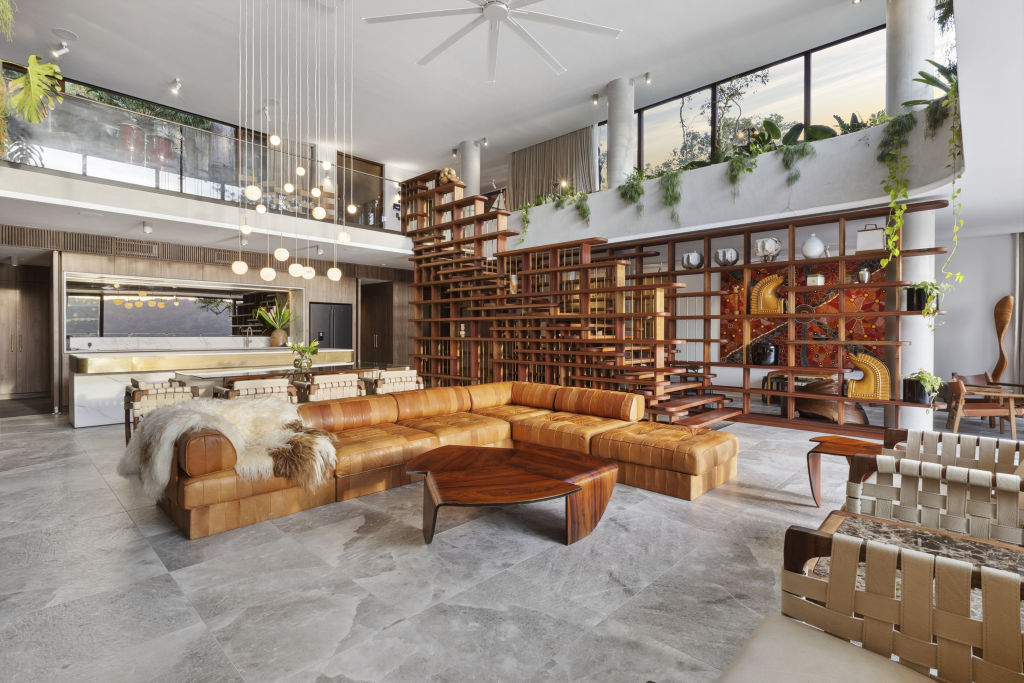
While most of the spaces sit in the tree canopy and enjoy water views through expansive glass, the “hero of the show” is an open-plan area approached from the entry-level mezzanine and down a spotted-gum staircase with sculptural shelving. It’s a match for the ever-changing natural spectacle before it.
“That beautiful open, lofty space, drenched in sunlight, makes my heart sing,” Durie says. “We call this Belah House, after the local First Nations people’s word for sun. West-facing, it enjoys that rarity on the east coast – gorgeous multicoloured sunsets over water.”
Every airy and light-soaked space meets Durie’s brief for “a functional forever home that treads lightly on the planet”.
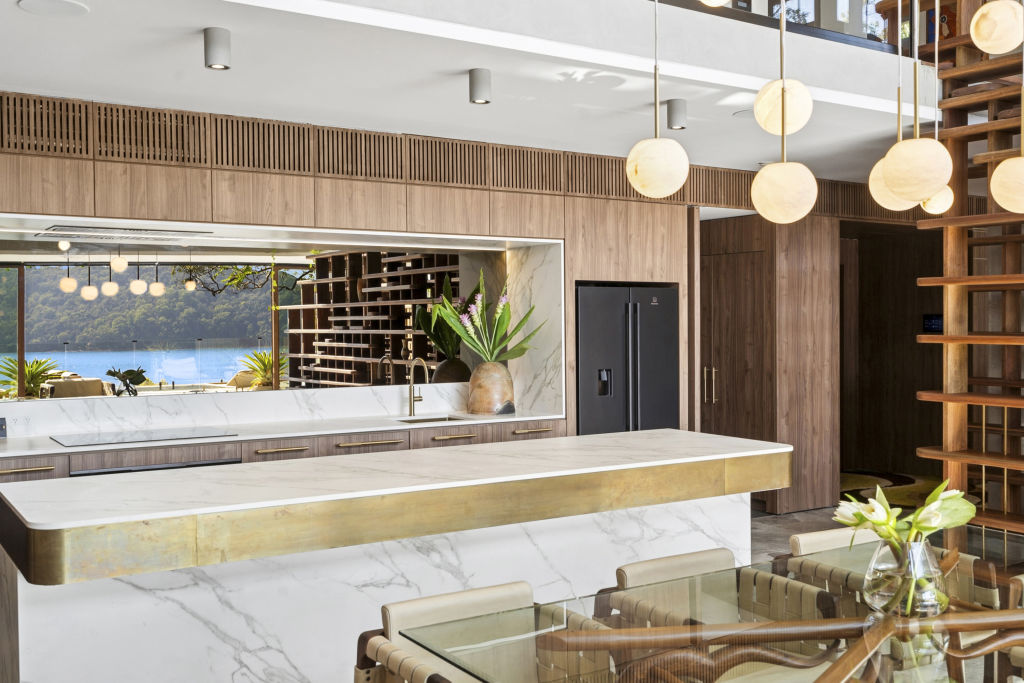
In tandem with those oxygen-generating plants immersing the living room in waves of foliage, Durie embraced all things eco-friendly, resulting in a home that is powered by solar and geothermal energy, with the potential to go off-grid.
Sustainability and zero volatile organic compounds were watchwords when selecting the materials.
Low-carbon concrete was used in the construction, while the inside boasts sustainable spotted gum, recyclable silica-free stone for the monolithic kitchen island bench, and carpets made from recycled plastic.
To ensure his masterpiece melds seamlessly with its bushland setting, Durie planted around 3000 native plants, with automatic watering via rainwater tanks totalling 57,000-litres, and clad it in sandstone.
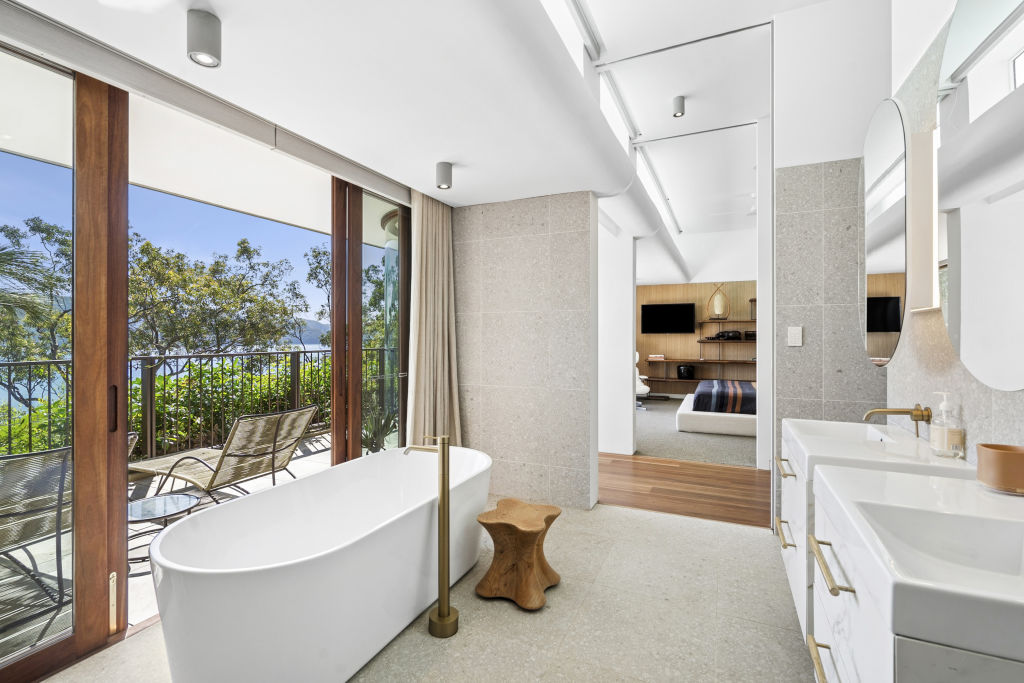
“I love turning waste into wonderful,” he says. “On the north and south sides facing the neighbours, I created 330 square metres of vertical gardens with natives planted in geotextile blankets made of recycled plastic bottles harvested from the ocean.”
He articulated the facade in sandstone with curved edges, creating a flowing, organic form.
Now, despite this long-time labour of love, Durie and his family are decamping to their 30-hectare farm in the Northern Rivers, while the children are still young.
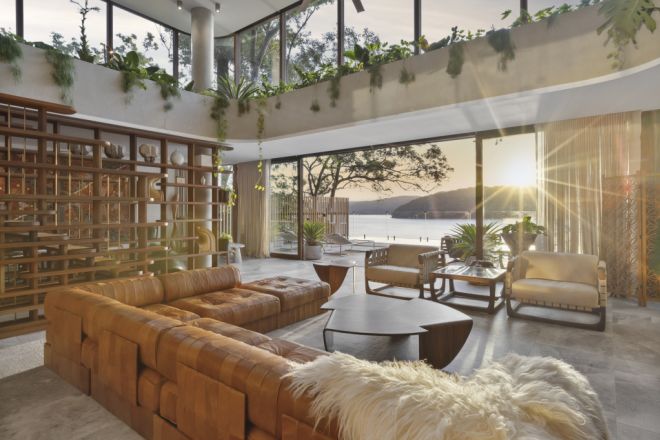
“This was to be our forever home, but unexpected door-knocks from potential buyers made us ask where we wanted to be right now,” he says.
“There, the children are connected to the earth, growing their own veggies and looking after the chooks. But we will eventually return to the Northern Beaches – I love its sense of community.”
With interest at around the $33 million mark, he could soon receive an offer too good to refuse.
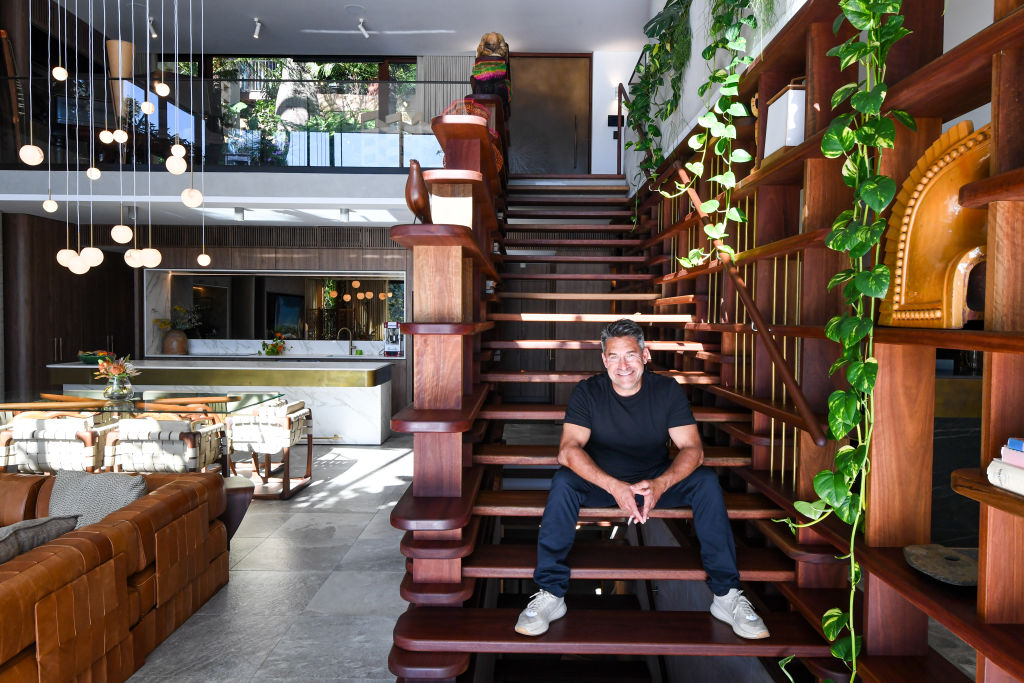
“We built the most sustainable house we could, at this point in time,” Durie says.
“This is my life’s best work. I hope it goes to someone who understands it and is going to be its custodian. It’s a legacy house.”
We recommend
We thought you might like
States
Capital Cities
Capital Cities - Rentals
Popular Areas
Allhomes
More
- © 2025, CoStar Group Inc.
